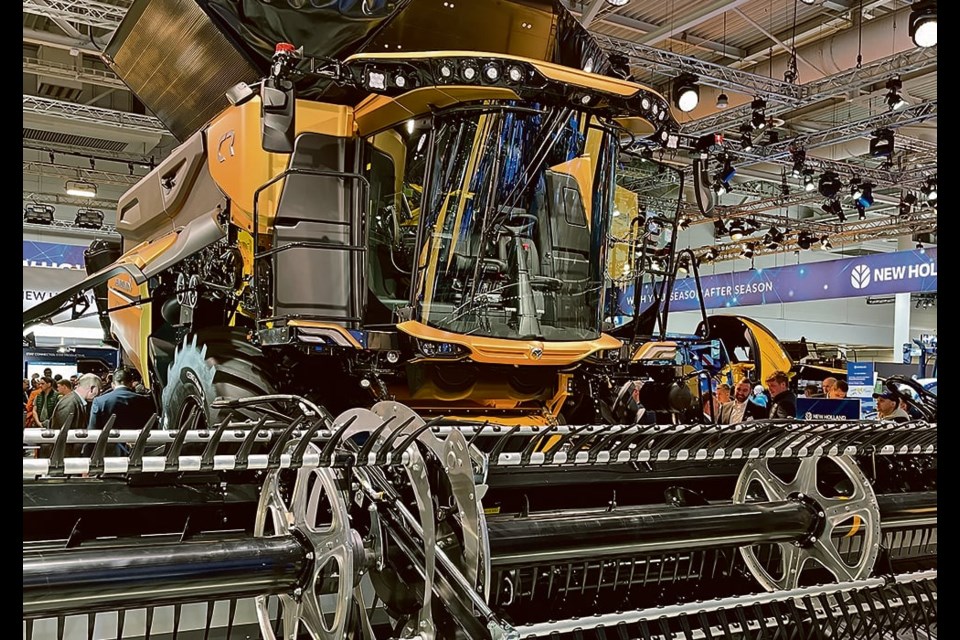HANOVER, Germany — New Holland’s new CR11 combine moves more bushels than any previous New Holland combine but takes up the same space on the road, thanks to some award-winning engineering.
The CR11 increases productivity for the New Holland line, coming in at 775 horsepower and featuring two 24-inch rotors, a grain tank capacity of 20,000 litres and an unload rate of 210 litres per second, which allows the tanks to be uploaded in about a minute and a half.
The combine was unveiled at the Agritechnica equipment show in Hannover, Germany, this week.
“What we’re looking at is a machine that will position itself on top of anything else on the market,” says Geert Nerinckx, global product manager for the CR series combines. That includes what New Holland expects will eventually be a new world record for cereals harvesting achieved by its CR 10.90 model.
The combine includes innovations throughout and was awarded the gold medal in Agritechnica’s innovation competition. There were 218 entries in the competition, with the New Holland combine winning gold.
The combine was redesigned with significant changes throughout, which increased the harvesting capacity without increasing the combine’s physical size or weight. That was the innovation highlighted by the Agritechnica judges.
The engine was aligned at the same angle as the rotors and lengthwise, which increases power efficiency.
This also allowed the company to move drives from outside the combine and put them inside the crop flow, meaning fewer belts.
An example is that the left rotor is used as a drive shaft for the dynamic feed roll in the front of the combine. The rotor is a “strong element” and can transfer power to the front of the combine. As a result, the drives for the feed roll are removed from the outside of the combine. The feed roll is then co-ordinated with the speed of the rotor, which Nerinckx says helps reduce harvest losses.
The driveline orientation also helps with unplugging the machine. The plug location is identified with sensors and the rotors can be rocked to loosen it and then pulled through.
The draper header 小蓝视频 used is 50 feet, but in testing in Western Canada this summer, the company also successfully used a 60-foot header.
Nerinckx says New Holland aimed to reduce the total cost of harvesting with the CR11. To get there, it added performance, aimed to reduce harvest losses, spread more residue more evenly and automated management of the machine.
The feeder channel was made wider, and the dual rotors were made wider and 15 percent longer.
The goal was to reduce harvest losses to zero, says Nerinckx. A new cleaning chute system has two chutes, running one after the other. The distribution of grain in the cleaning chute is balanced automatically on slopes. There are sensors on the grain pan and the two top sieves, which work independently to make sure the cleaning chute adjusts.
There’s a new chopper and spreader system for residue, which can be adjusted in the cab. Two radar sensors look through the dust cloud to see where the material is landing, and it will automatically adjust the spreader for more even spread.
“It actually measures, versus guestimating where you should flow the material,” says Nerinckx.
The machine was shown at Agritechnica with tires, but it is also available with tracks.
SASKTODAY.ca is Saskatchewan's home page. Bookmark us at this link.




